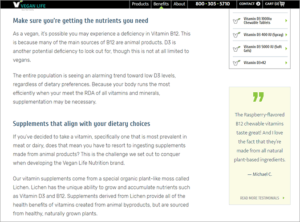Even after the myriad of changes search engines have made to their algorithms over the past couple of decades, one principle still holds strong: content is king. And, arguably, text content still reigns supreme.
So it’s vital that the language of your website be informative, relevant, and understandable. Following a few simple rules can help you fulfill all of these goals, and more.
There is no substitute for good writing
Of course, this is easier said than done. Any literate person can write. And while many of these people claim to be “writers,” finding one who has the skill of writing well, is rare. And what, exactly, does well-written content consist of?
Correct spelling, proper grammar, and appropriate punctuation go without saying. But there is another element of powerful text that is harder to define: flow. Effective writing draws the reader along smoothly and effortlessly, so that there is a logical, natural progression from one sentence — and paragraph — to the next.
Search engines have gotten so sophisticated that they can actually detect this level of skill. The take-away? Find the best writer you can for your website!
Make your website copy easily digestible
 We have a saying here at Caroff Communications: bite-sized pieces of information. This is a technique I learned years ago when publishing a magazine for Fender, and it continues to serve me well as a website creator.
We have a saying here at Caroff Communications: bite-sized pieces of information. This is a technique I learned years ago when publishing a magazine for Fender, and it continues to serve me well as a website creator.
Breaking up your content into relatively short sentences and paragraphs is essential. In addition, we try to throw in subheads every two or three paragraphs. Given that website readers tend to scan versus read even more than they do for print publications, this kind of modularity is key.
We also employ modularity in our design concepts, with breakout sections, boxes, columns, etc. Again, this lets the reader jump from spot to spot and pick up information in the order that best suits them.
Don’t underestimate the value of the fonts
A whole new world opened up for website designers, when web fonts became common. Take time to choose the font, or fonts, used on your site. Style is certainly important (think serif fonts for conservative sites like financial and medical), but that is only one among many criteria. One of the first steps you should take in designing your site is selecting the fonts carefully.
It is especially helpful to select a font that has many different weights and versions (bold, semi-bold, light, narrow, italic, et al.). This will give you a great deal of flexibility in design, while maintaining a consistent look. Whatever font you choose, make sure it is readable on all devices. Don’t forget that more than half of your viewers will visit your site on their cell phone!
Two readability issues: capitalization, and column width
Let’s talk about column width first. There is a reason why venerable printed matter like established books, newspapers, and magazines, employ relatively narrow columns: the human eye has a difficult time scanning text that extends too far to the left and right. The danger of website coding is that a flexible column may be far too wide for the eye on a large scale monitor. Find ways to constrain your column width, while maintaining a pleasing design.
And finally, is the issue of capitalization. It’s fairly well established that ALL CAPITALS is difficult to read, and annoying to boot! What is less well known is that using a single leading capital in your headlines is actually more readable then capitalizing every word.
Ironically, people seem to do this because they think it looks more “important,” and will draw the reader’s attention; actually, it makes headlines more difficult to read, which has the opposite effect. (Note: In extremely short 2- or 3-word blurbs, such as navigation tags, it works perfectly well to capitalize every word.)
In conclusion, following a few simple rules, like the ones above, will help present your message in the most effective way possible — which is exactly what you are trying to achieve.






